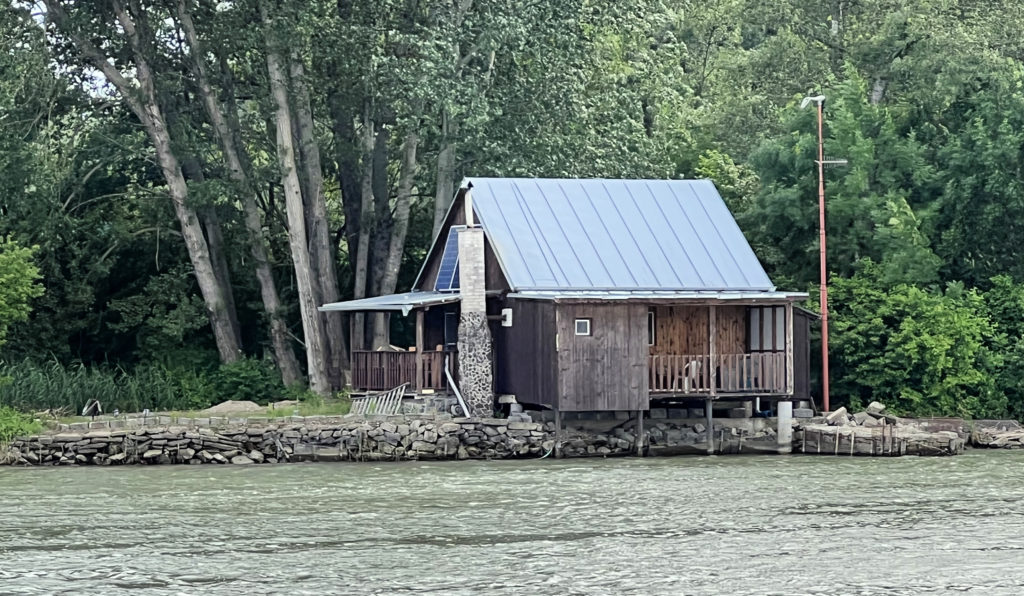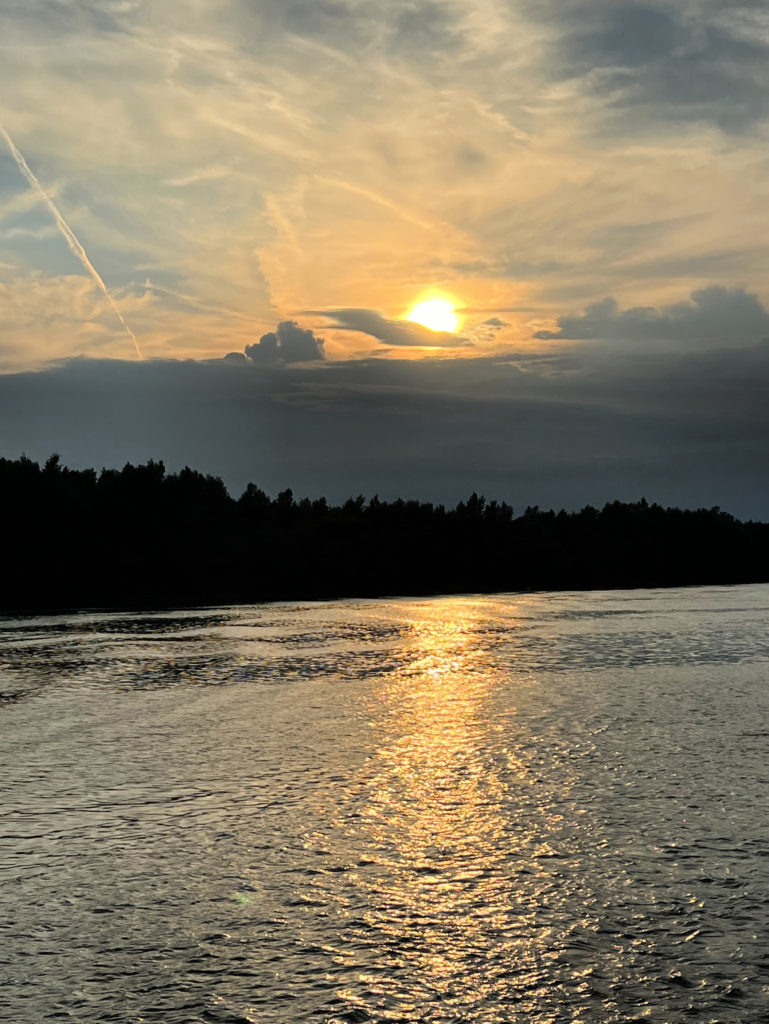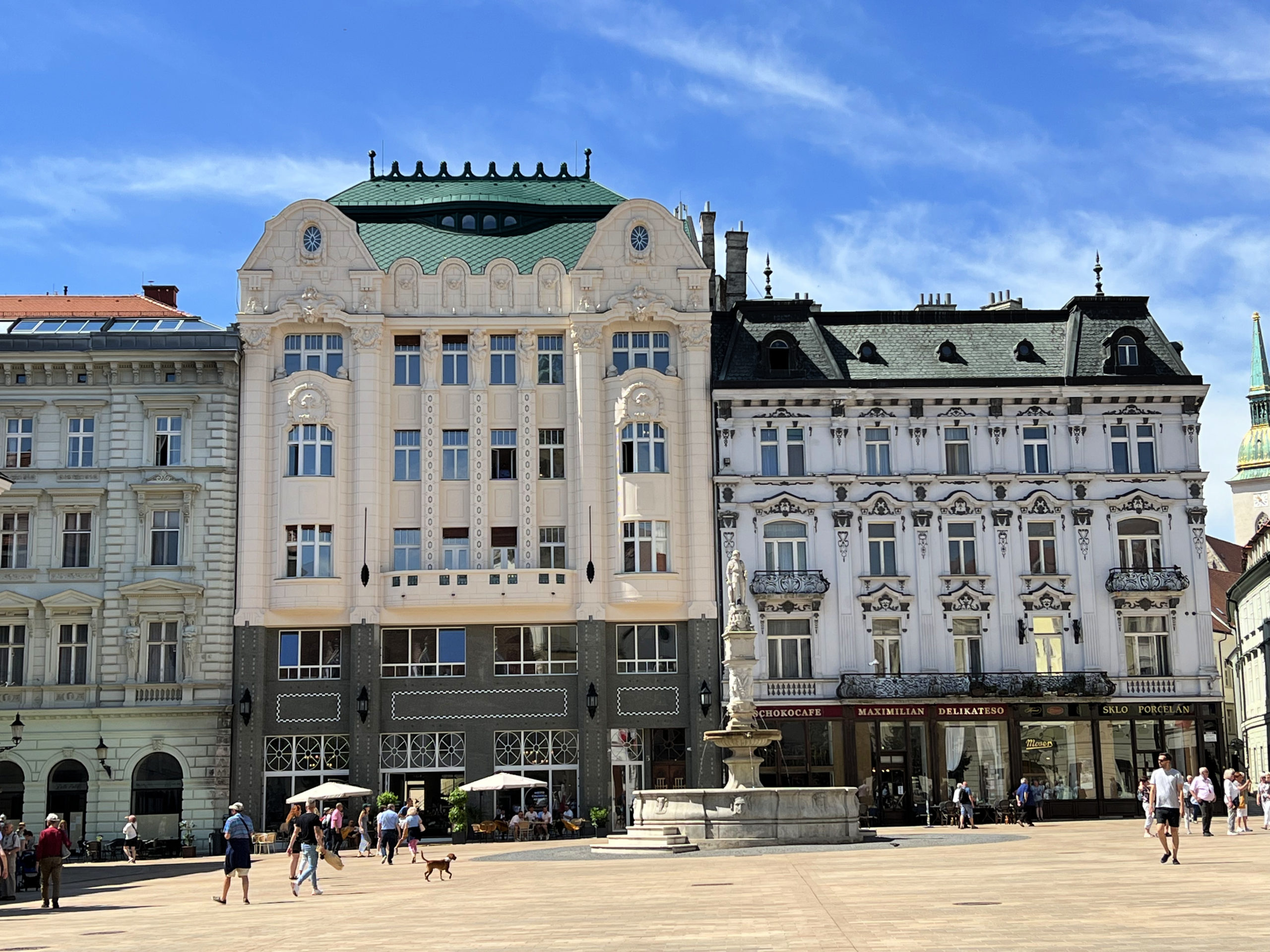
Bratislava, Slovakia
After leaving Vienna, we sailed to Bratislava, Slovakia. Originally known as Pressburg, it was annexed by Hungary in the 11th Century and served as the capital of Hungary for nearly 250 years. In 1919, the city was annexed to the Czechoslovak Republic and at that time its name was changed to Bratislava. The Nazis and then the Soviets controlled Bratislava until 1989. With the split of Czechoslovakia into two nations in 1993, Slovakia became an independent state with Bratislava as its capital. It is the only capital that borders two nations, Austria and Hungary.
As we docked, we saw a bridge crossing the Danube commonly referred to as the “UFO Bridge.” It was officially known as the New Bridge when it was built in 1972. The circular observatory gives the bridge Its nickname. It is the world’s longest bridge with only one pylon.
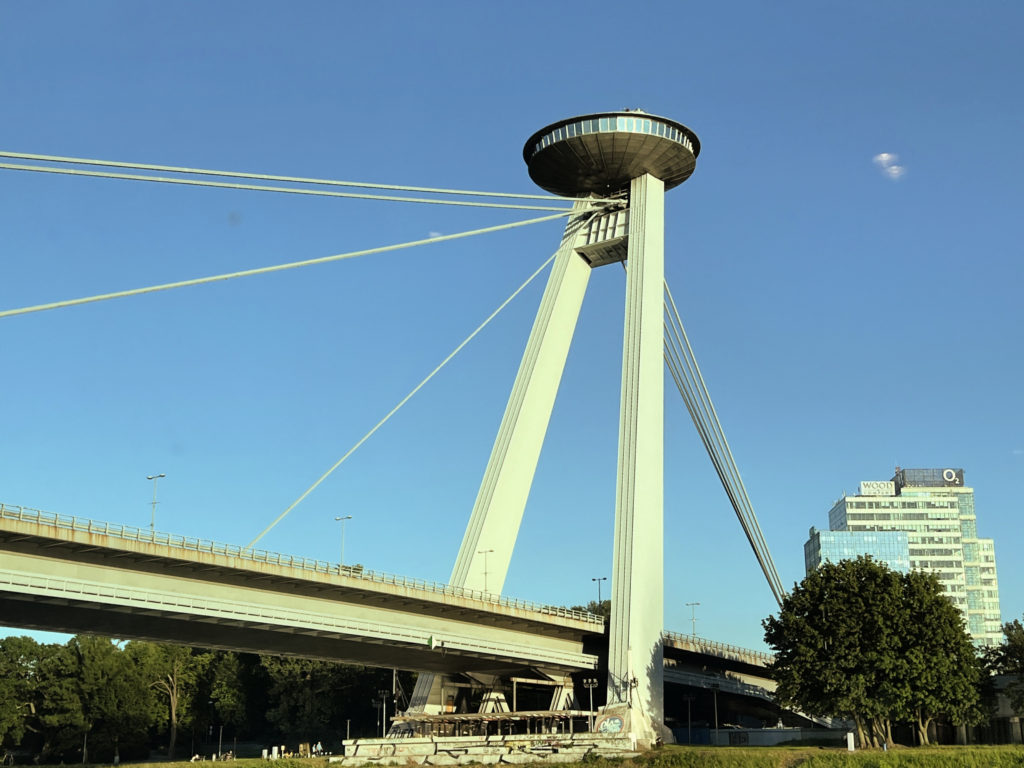
We did a walking tour of Bratislava. In addition to being the seat of government for Slovakia, it is also the cultural and economic center. Bratislava has several museums, theaters, galleries and concert halls. Economically, The Volkswagen Group is one of the largest companies operating here. The city has become a leader in manufacturing cars. Bratislava is also attracting high tech and service companies such as IBM, Dell, AT&T, Amazon and Johnson Controls. This is thought to be due its skilled labor force and the many universities and research facilities in the area.
Our walking tour took us into “Old Town” Bratislava. It is the historic center and includes the medieval city center, churches, cultural institutions and embassies. The first picture below is of the Victory Monument, commemorating the liberation of Bratislava by the Red Army at the end of World War II. The sculpture of Victoria (a goddess in Roman culture symbolizing victory) holds out an olive branch in her right hand.
We also saw the old building of the Slovak National Theater. It is on the Hviezdoslav Square and was built in 1885-86. It was restored between 1969 and 1972; a technical building was built behind the original structure.
The US Embassy in Slovakia is also pictured. The US established diplomatic relations with Slovakia in 1993 and provided assistance to support the rebuilding of a healthy democracy and market economy. The Embassy website states that Slovakia is a NATO ally and that the two countries have “a mutual commitment to freedom and human rights.”

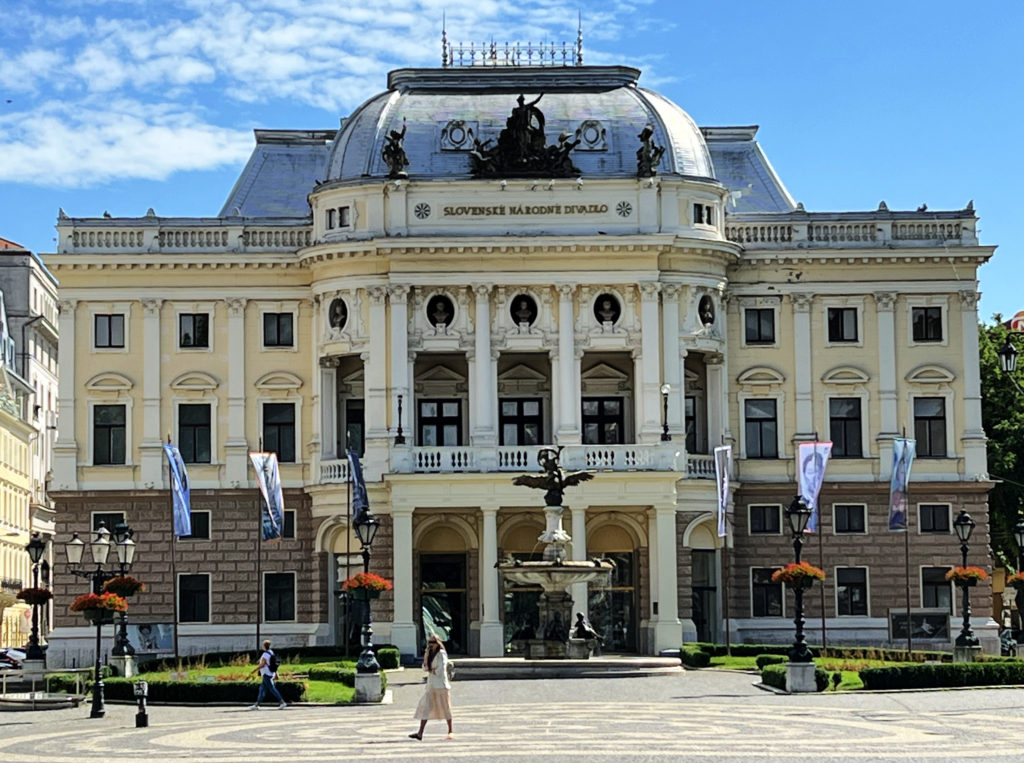

The first three pictures below are of St. Martin’s Cathedral. In much earlier times, worship services were held in the Bratislava Castle. When its safety was threatened, the church was moved from the castle (1221). As the town grew, construction for a larger church began – this was in 1311. Construction was interrupted by war but the Cathedral was finally consecrated in 1452 although work continued for much longer. The Cathedral was also a coronation church for the kings and queens of Hungary. Eleven kings and queens and eight of their consorts were crowned here between 1563 and 1830.
The Cathedral’s tower was destroyed by fire and was reconstructed in 1847. It was topped by a gold-plated replica of the Crown of St. Stephen that is meant to commemorate the Cathedral’s importance as a coronation church. The crown weights 330 pounds and is a little over three feet in diameter. The Cathedral itself was damaged by fire, war and an earthquake. Rebuilding occurred between 1869 and 1877 with the Cathedral looking much as it does today.
The Neolog Synagogue was once next to St. Martin’s Cathedral. It was demolished in 1969 by the Communist government to make room for the “UFO Bridge.” The Holocaust Memorial was erected in 1996 near the site of the former synagogue. It commemorates the 105,000 Holocaust victims from Slovakia.

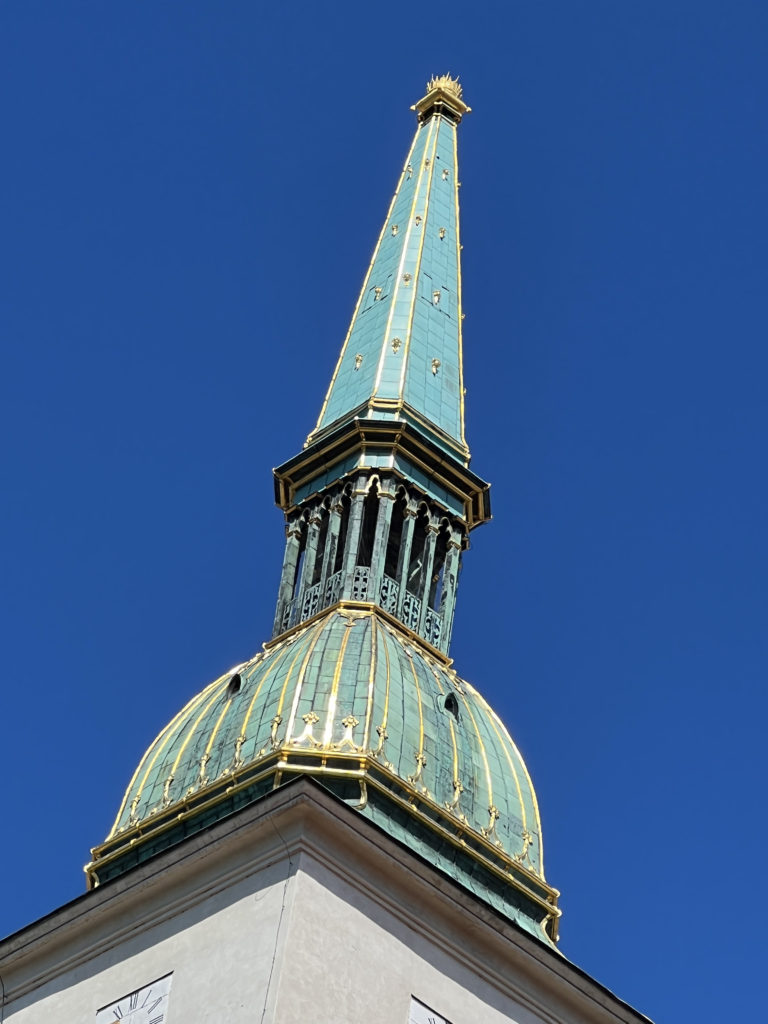
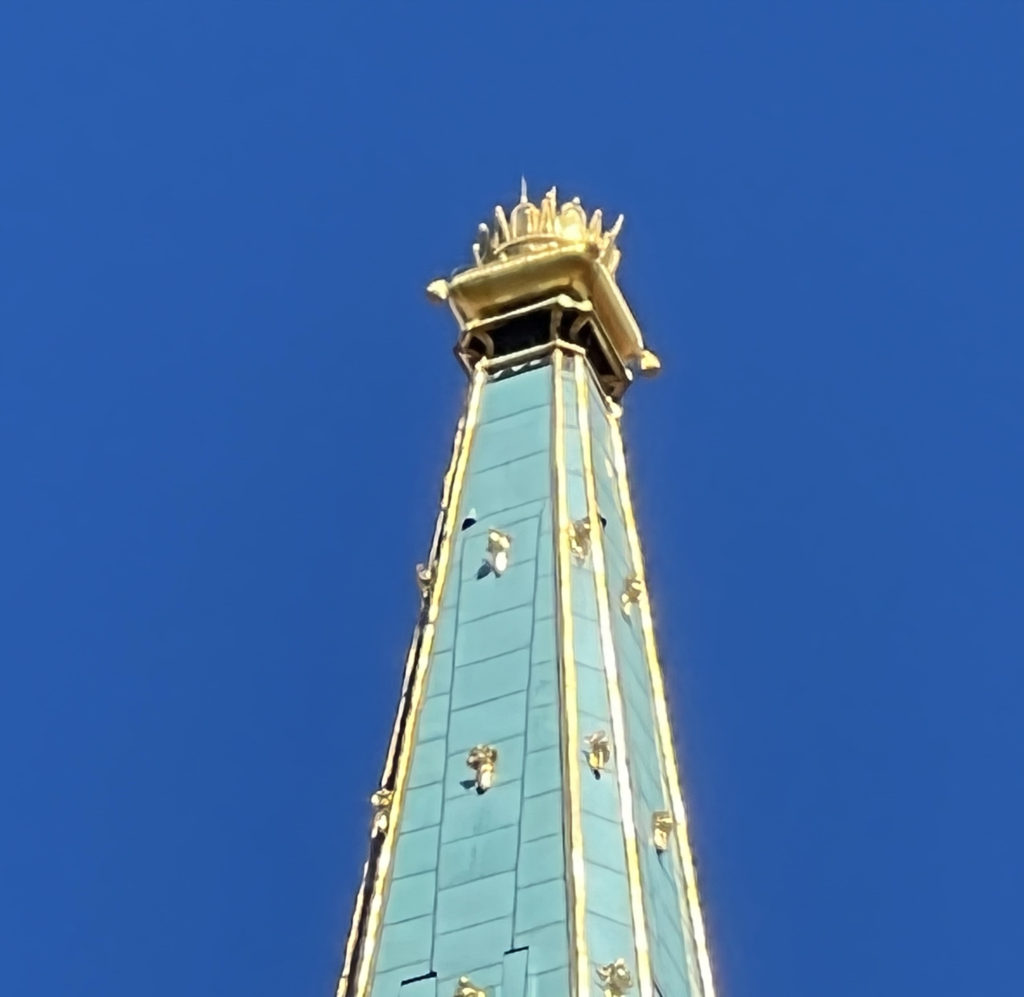
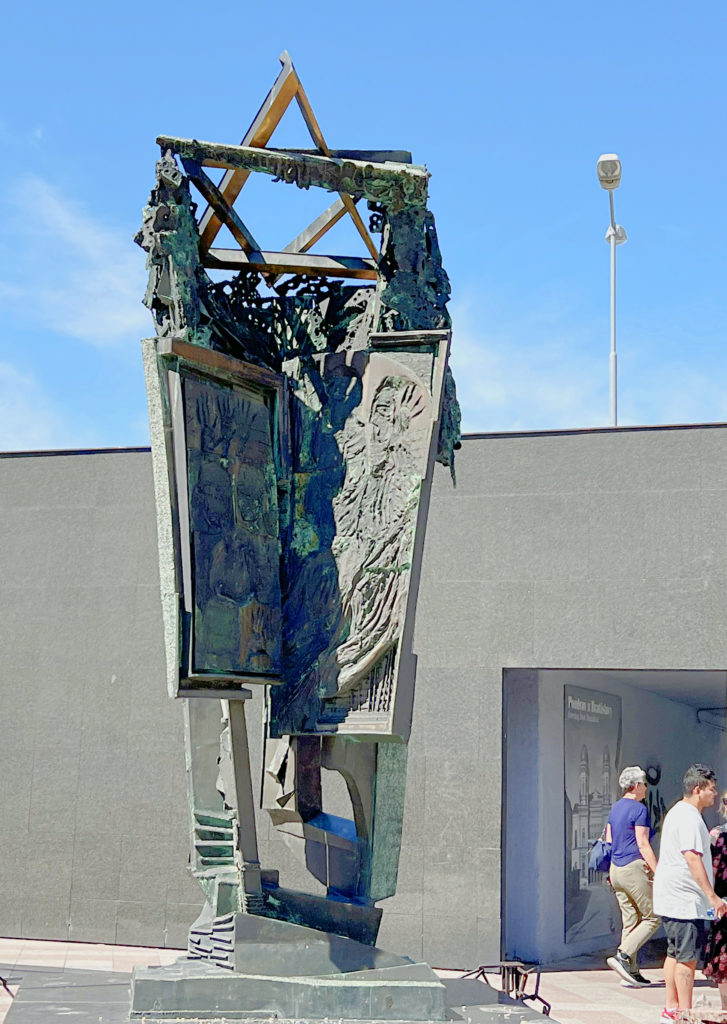
Pictured below is the Pharmacy Salvator. The pharmacy dates back to 1904 when the bottom floor served as the pharmacy and the other floors as apartments. Its name references the statue of Jesus on the facade (Salvator translates to Savior). Currently the pharmacy is owned by the city. The city just recently issued a lease to a non-profit that will operate it as a pharmacy, reconstructing/restoring it. This work is scheduled to begin in the fall of 2022. Some of the original furniture has been purchased from a private collector and will be returned to the pharmacy. In addition to operating as a pharmacy, it will also be open to the public as an historical site.
We also saw the Konditorei Kormuth, a bakery and museum. The interior includes original, antique furniture from the 16th to 19th century. It has beautiful paintings and wallpaper. In addition to the history and culture on display, delicious cakes and other pastries can also be purchased.
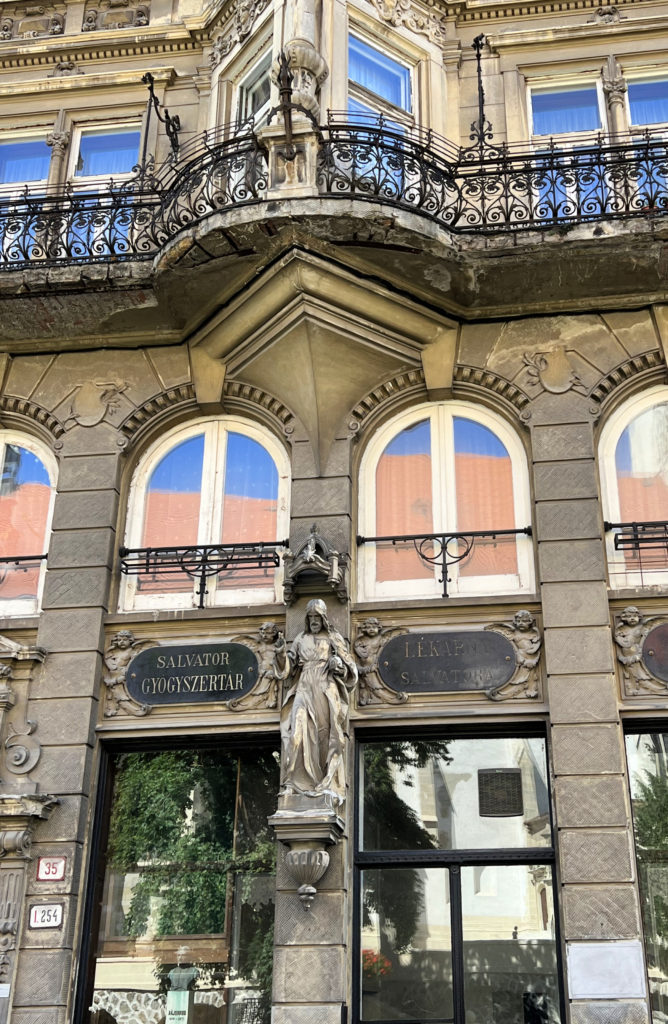

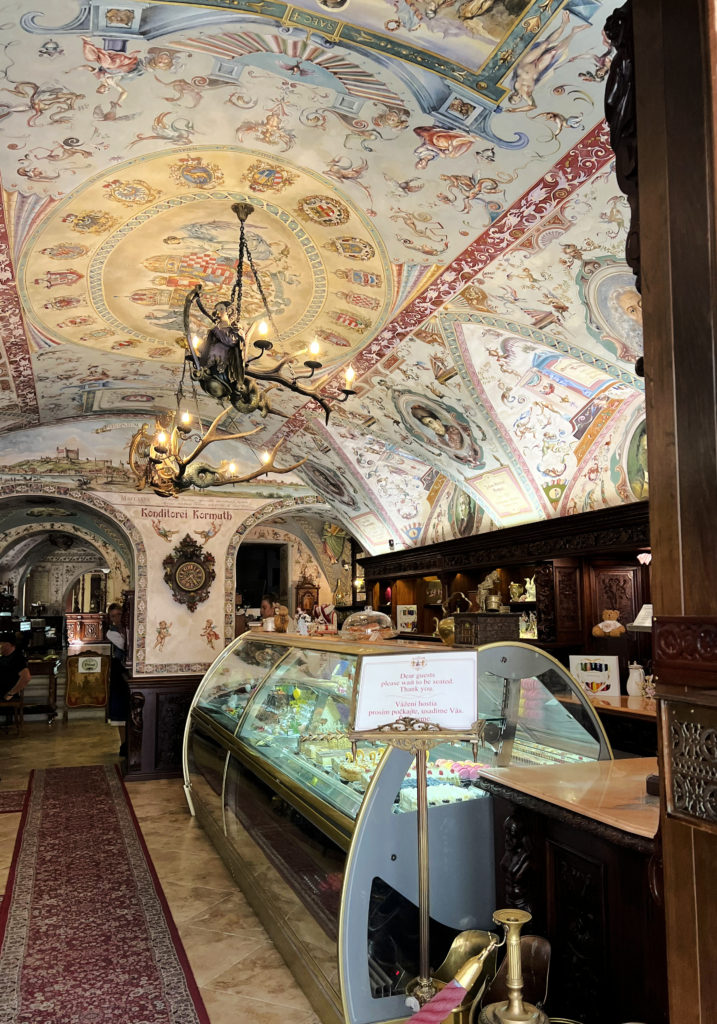
We also visited Primate’s Palace, which is a beautiful pink building built between 1778 and 1781 for the archbishop. Today, the Mayor of Bratislava has his office in the palace and the City Council also meets here. One of its most famous rooms, the Hall of Mirrors, is where the Treaty of Pressburg between Austria and France was signed in 1805.
One of the highlights of the visit was seeing a set of six tapestries depicting the story of Hero and Leander. They were made in the 1630s at the Mortlake Tapestry Works in London. One source said there were four complete sets of the tapestries but the one in Bratislava is the only complete, surviving set. They were discovered behind wallpaper in the vestibule of the Hall of Mirrors in 1903.
The emplacement of the tapestries in Primate’s palace is rather mysterious. The tapestries were uncovered carefully rolled behind wallpapers during the reconstruction of the Palace at the beginning of 20th century. Their long mysterious way from England to Bratislava is to this day a matter of theories and assumptions.
https://izi.travel/en/674b-the-primate-s-palace/en
According to the legend, Hero was a priestess and she and Leander were in love. Hero lived in a tower and she would light a torch to guide Leander as he swam to her at night. One stormy night, the fire in the torch blew out and Leander became lost and drowned. His body washed to shore and when Hero saw it, she jumped from tower, also dying. They were buried in a “lover’s tomb.” I took a picture of one of the tapestries before our guide told us pictures were not allowed.
We left the interior of the palace and walked out to an inner courtyard of the Primate’s Palace. There we saw the Fountain of St. George sculpted in the mid 17th Century. The statue shows St. George slaying a three-headed dragon. There are several stories about what the fountain represents. One says St. George symbolized the archbishop and the Catholic Church trying to banish the Reformation from the city. Another says George was an officer in the Roman army. He came to Bratislava to find the town was being terrorized by the dragon. George killed the dragon with his spear. The fountain has become a symbol of the battle against evil.
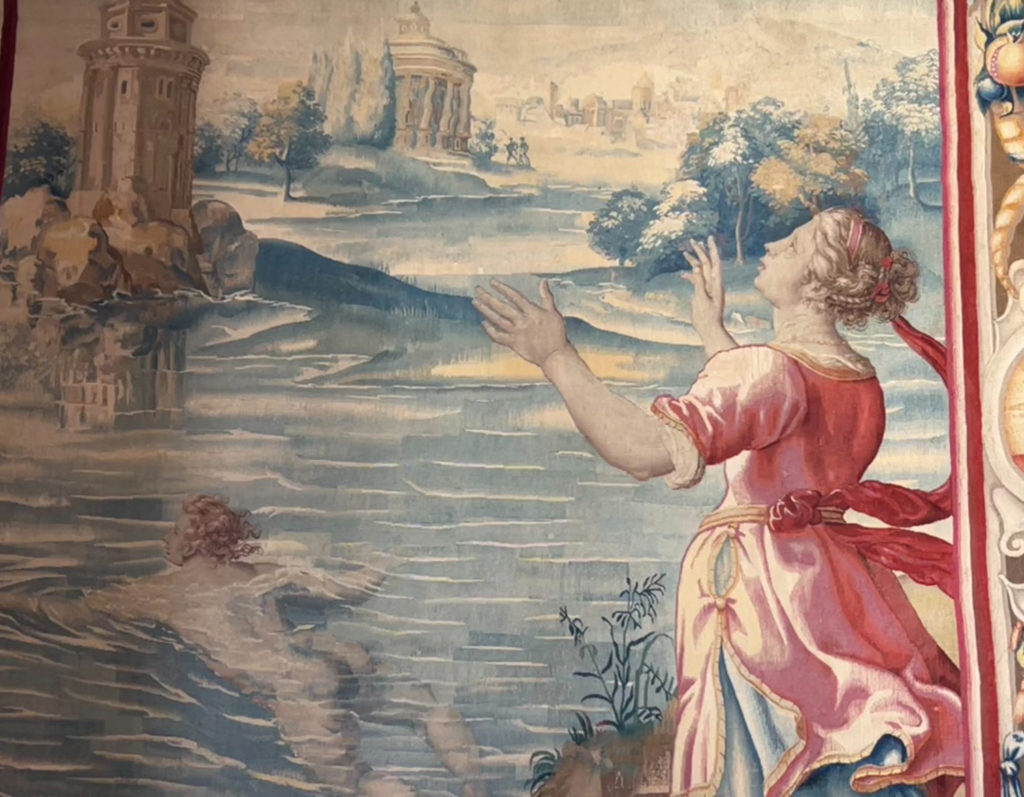
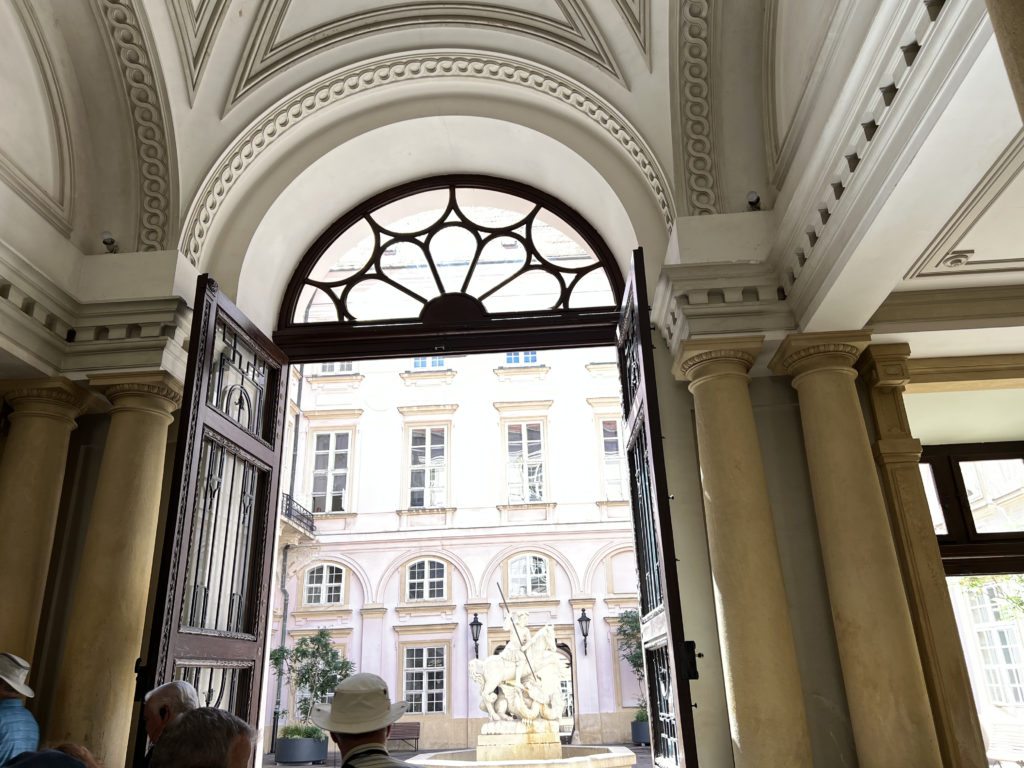


The first picture below is part of the old fortification walls. There were four gates into the city which were fortified after the invasions of the Hussites. The fortification walls were 50 to 60 inches thick. Large sections of the walls were removed in the 1770s by order of Empress Maria Theresa because they no longer served an important defensive purpose.
The next picture is a red door with paintings on it that we saw on our walking tour in Old Town. I was unable to find anything about it, but I thought it was interesting.
We also saw the Old Town Hall. It is made up of the tower and three townhouses that were connected together in the 15th Century. The tower is thought to have been built around 1370. The Old Town Hall is the oldest stone building in Slovakia. Stone towers were sometimes part of medieval townhouses to provide protection in the event of war or a way to save valuables in case of fire. It functioned as the town hall from the 15th Century to the late 18th Century. Presently it houses a city museum. One can also climb the stairs in the tower for views of the city.
The last picture is the Main Square with the Roland Fountain. It dates back to 1572 and is the oldest fountain in Bratislava. When King Maximillian II was crowned, there was a devastating fire and insufficient water to fight the fire. So it was decided to build this fountain in the main square so there would be additional water if such a fire occurred in the future. At the top of the fountain is a figure, some say Knight Roland, a defender of the city, while others say it is Maximillian II.

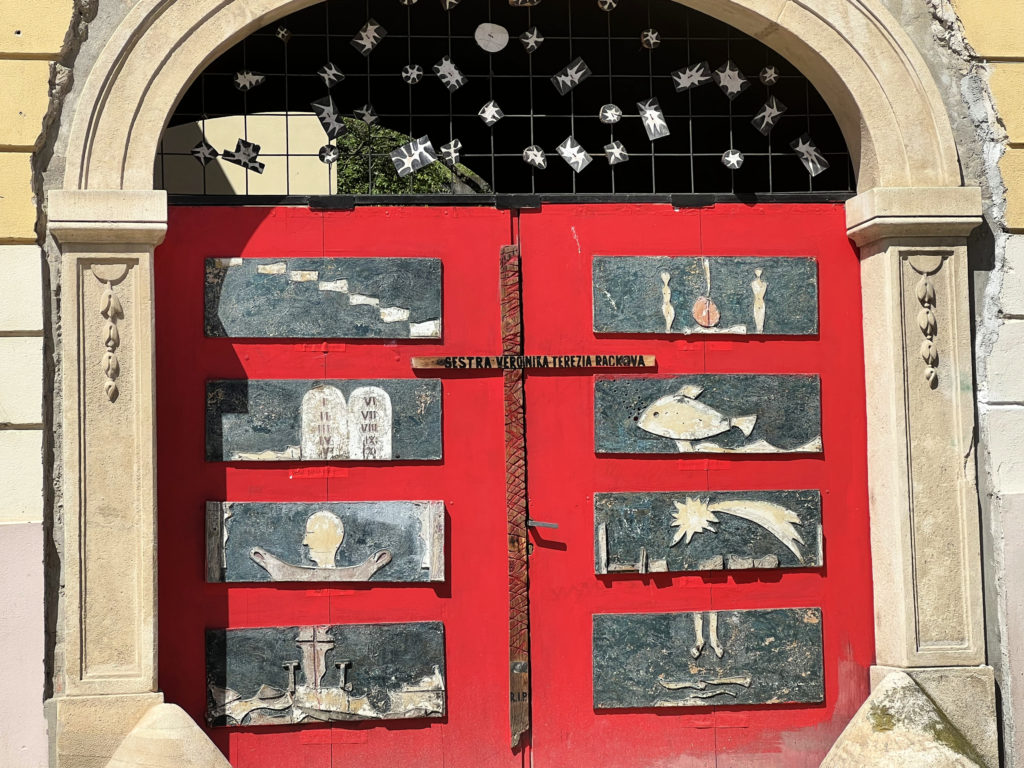
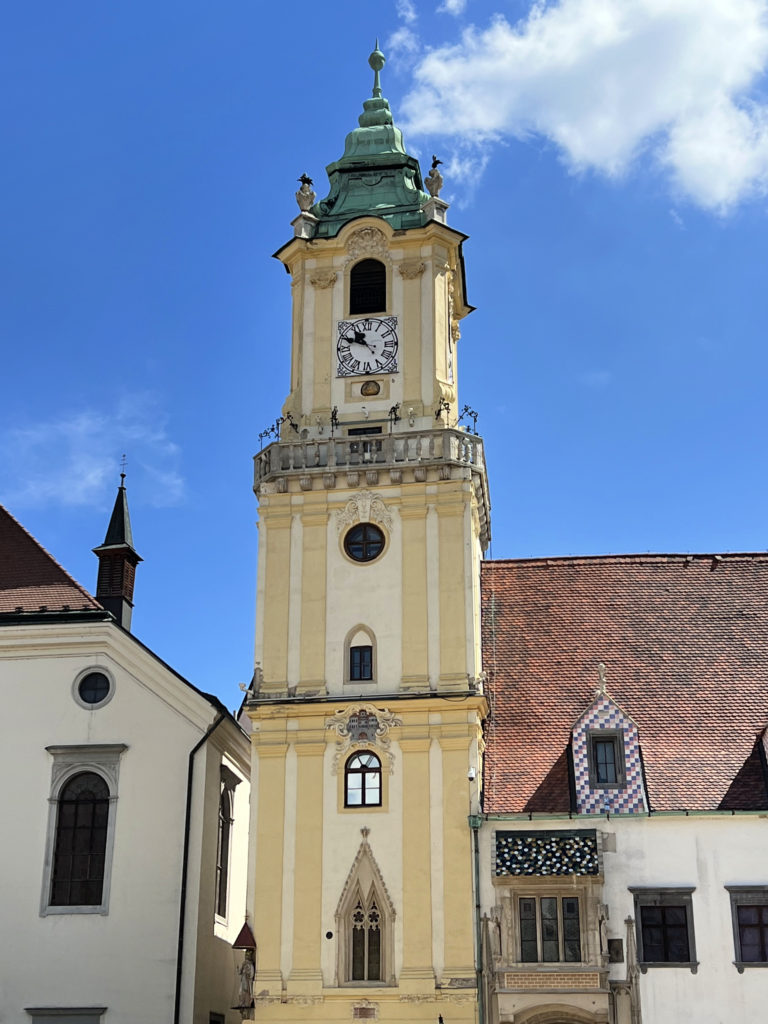
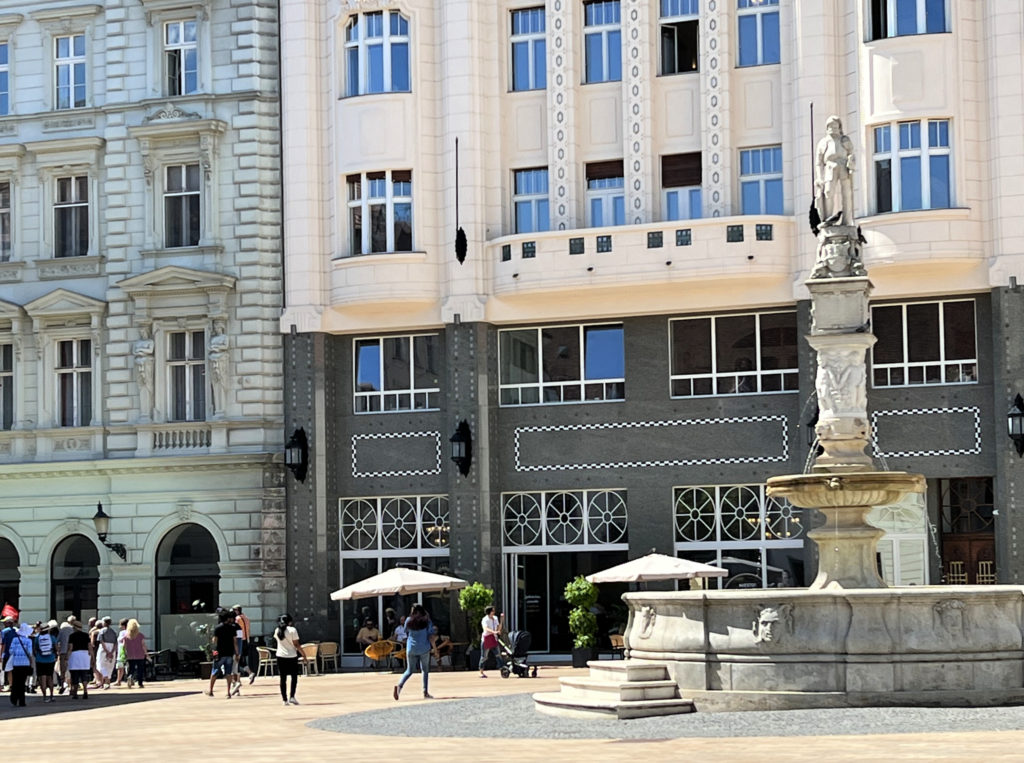
Pictured below is the main square, or Hlavne Namestie. No vehicle traffic is allowed on the squares so it is pedestrian-friendly. Many of the buildings are painted in pastel colors. Toward the back of the square is the Old Town Hall. In this picture, it is easier to see the three townhouses connected to the tower.
We saw several statues on our walking tour. They are meant to add humor to the communist-era architecture common in Bratislava. Most are near the main square. The second picture below is one of Napoleon’s soldiers and it has an interesting story.
Napoleon and his army were in Bratislava in 1805. This soldier is supposed to have been going through Bratislava when he fell in love with a local girl, stayed in the city and became a producer of sparkling wine. His name was Hubert – which is also the name of Slovakia’s most popular sparkling wine’s brand.
https://www.welcometobratislava.eu/bratislava-statues/
And of course a very popular statue is Cumil, the peeper, also known as “Man at Work.” He has been part of Old Town since 1997 and is one of its symbols. As you might imagine, there is some debate about what he is doing. Is he taking a break and resting? Or is her trying to get a glimpse under a woman’s skirt? Whatever, he has become a very photographed sewer worker!

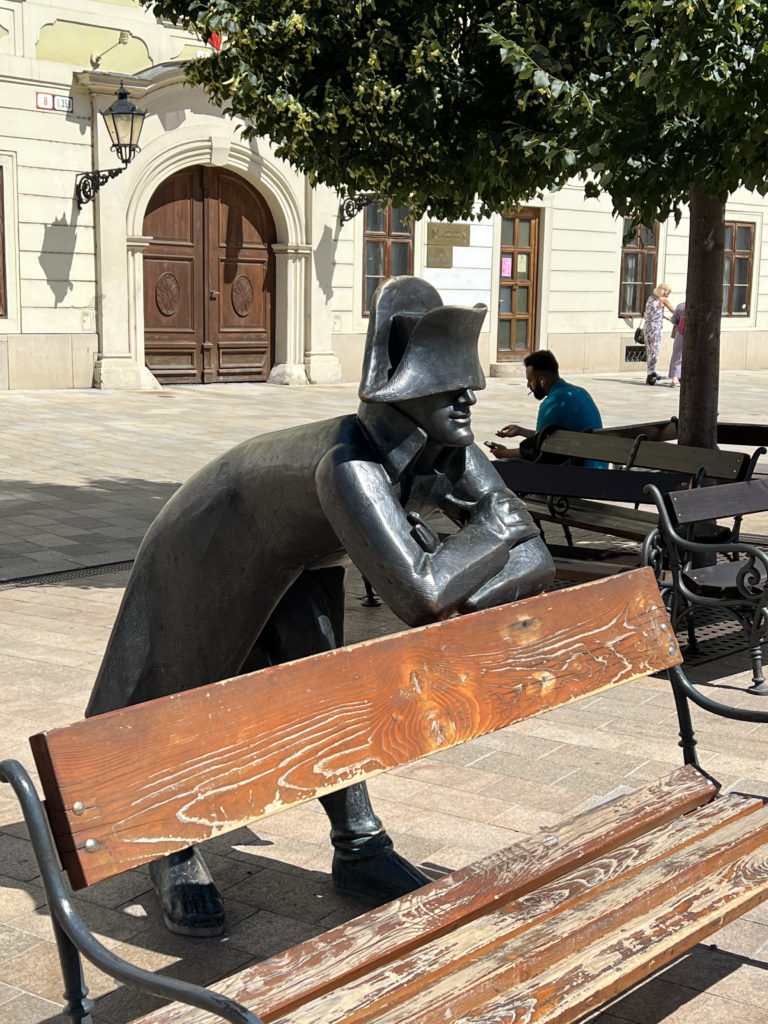
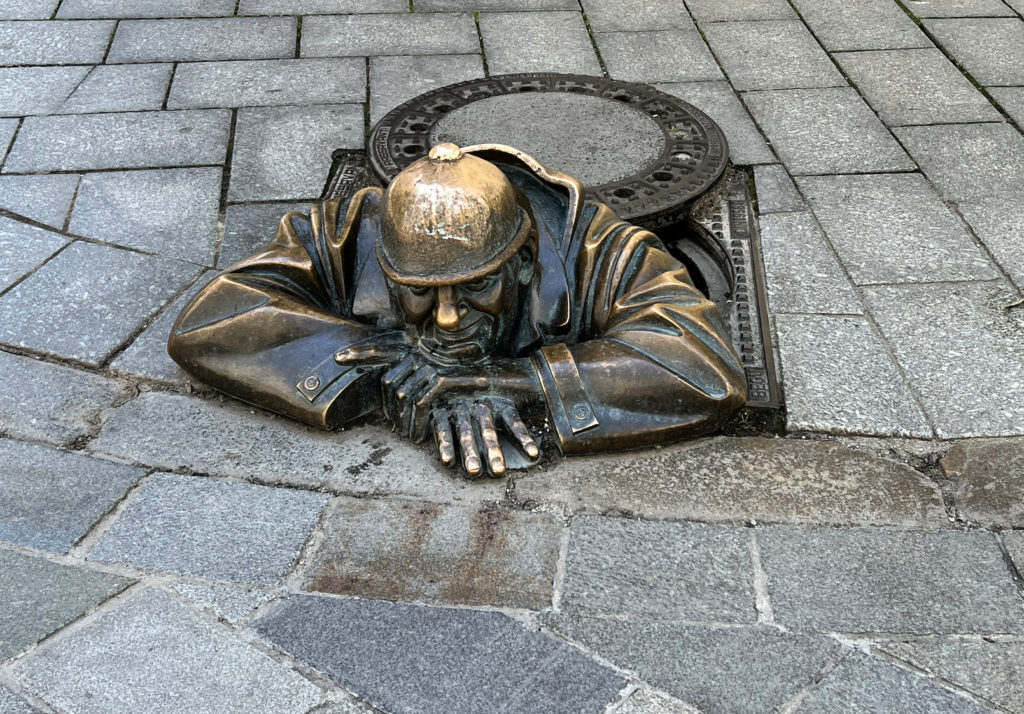
Once we were back on board our riverboat and cruising toward Budapest, we saw several fishing huts along the shore. Many are built on poles. Some are very simple while others have porches like the one pictured. It is common to see large large nets in the river though some people fish with poles. A little later there was a beautiful sunset.
